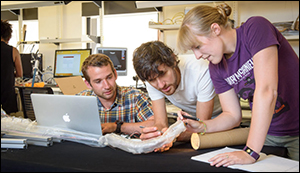New type of soft, growing robot
21. 7. 2017 | Stanford University | news.stanford.edu
Imagine rescuers searching for people in the rubble of a collapsed building. Instead of digging through the debris by hand or having dogs sniff for signs of life, they bring out a small, air-tight cylinder. They place the device at the entrance of the debris and flip a switch. From one end of the cylinder, a tendril extends into the mass of stones and dirt, like a fast-climbing vine. A camera at the tip of the tendril gives rescuers a view of the otherwise unreachable places beneath the rubble.
This is just one possible application of a new type of robot created by mechanical engineers at Stanford University, detailed in a June 19 Science Robotics paper. Inspired by natural organisms that cover distance by growing – such as vines, fungi and nerve cells – the researchers have made a proof of concept of their soft, growing robot and have run it through some challenging tests.

The basic idea behind this robot is straightforward. It’s a tube of soft material folded inside itself, like an inside-out sock, that grows in one direction when the material at the front of the tube everts, as the tube becomes right-side-out. In the prototypes, the material was a thin, cheap plastic and the robot body everted when the scientists pumped pressurized air into the stationary end. In other versions, fluid could replace the pressurized air. What makes this robot design extremely useful is that the design results in movement of the tip without movement of the body.
Read more at Stanford University
Image Credit: L.A. Cicero
-jk-




